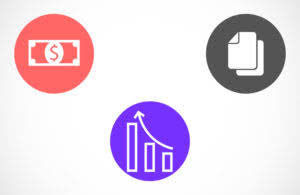Bond Amortization Calculator
The straight-line method is a simpler alternative to the constant yield method. This method involves dividing the total bond premium by the number of years until maturity and amortizing the same amount each year. The bond amortization calculator calculates the bond issue price, which is a function of both the bond rate and the market rate. The total bond premium is equal to the market value of the bond less the face value.
Return of Capital Pymts
The choice of day-count convention affects the calculation of accrued interest and, therefore, the price of the bond when it is traded between coupon dates. The second calculator above gives the option to select the day-count convention to use in the calculation. The accrued interest differences between different day-count conventions are normally very small.
- A bond premium occurs when the price of the bond has increased in the secondary market due to a drop in market interest rates.
- For a bond investor, the premium paid for a bond represents part of the cost basis of the bond, which is important for tax purposes.
- This is an important metric in the restaurant industry as it tells investors how profitable locations are before adding in corporate costs.
- The choice of day-count convention affects the calculation of accrued interest and, therefore, the price of the bond when it is traded between coupon dates.
- The IRS requires that the constant yield method be used to amortize a bond premium every year.
Bond Yield Calculator in Excel
- Meanwhile, modest annual same-store sales growth of 3% over this period would bring AUV for the company to about $3.4 million.
- Consider a bond with a face value of $1,000, a 5% coupon rate, and a maturity of 10 years, currently trading at $1,100.
- The dirty price is the actual amount paid by a buyer to the seller of the bond.
- High-quality government bonds (such as U.S. Treasury bonds) are typically viewed as safe investments, while high-yield corporate bonds (also known as junk bonds) carry higher risk.
- It pays periodic interest payments i.e. coupon payments based on the stated interest rate.
- A part of the payment covers the interest due on the loan, and the remainder of the payment goes toward reducing the principal amount owed.
The annual bond premium amortization is calculated by dividing the total bond premium by the number of years until maturity. When an investor buys a bond at a price higher than its face value, they are effectively paying a premium for that bond. This premium often arises because the bond’s coupon rate (interest rate) is higher than the current market rate, making it more attractive to investors. Since the coupon rate is paid semi-annually, it means that every six months, a coupon of $25 ($1,000 x 5/2) will be paid. Also, the yield to maturity is stated in annual terms, so semi-annually the yield to maturity is 1.945% (3.89% / 2).

Definition of Amortizable Bond Premiums
For instance, with a 10-year bond paying 6% interest that has a $1,000 face value and currently costs $1,080 in the market, the bond premium is the $80 difference between the two figures. The table starts with the book value of the bond which is the face value (250,000) plus the premium on bonds payable (9,075), which equals the amount of cash received from the bond issue (259,075). The book value of an asset is the amount of cost in its asset account less the accumulated depreciation applicable to the asset. The book value of a company is the amount of owner’s or stockholders’ equity.
- Each calculation done by the calculator will also come with an annual and monthly amortization schedule above.
- Bond investors need to know how to deal with bonds that cost more than their face value.
- However, the risk and return on bonds can vary widely, depending on the creditworthiness of the issuer and the bond’s duration.
- In order to calculate the premium amortization, you must determine the yield to maturity (YTM) of a bond.
- As mentioned earlier, if market interest rates fall, any given bond with a fixed coupon rate will appear more attractive, and it will result in the bond trading at a premium.
How to calculate the bond price?
The premium on a bond, which occurs when its market price exceeds its face value, is closely tied to its yield-to-maturity (YTM), the total return anticipated on a bond if held until it matures. This premium is not a static figure; it fluctuates in response to a myriad of factors that can either elevate or diminish its value in the eyes of investors. When investors consider the value of a bond, they often look at the yield-to-maturity bond premium amortization calculator (YTM), which is the total return anticipated on a bond if the bond is held until it matures. A bond premium occurs when the bond’s market price is above its face value, a situation that inversely affects the YTM. This relationship is pivotal in understanding the bond’s performance and investor’s return over time. Consider a bond with a face value of $1,000, a 5% coupon rate, and a maturity of 10 years, currently trading at $1,100.
The yield to maturity is the total return an investor can expect if they hold the bond until it matures. When a bond is purchased at a premium, the YTM will be lower than the coupon rate, as the investor https://www.bookstime.com/ has paid more for the bond than they will receive back at maturity. How to use the straight-line method Calculating bond premium amortization using the straight-line method couldn’t be simpler.
An amortizable bond premium is the amount owed that exceeds the actual value of the bond. This is considered the bond premium or trade premium because the bond cost more for you to purchase than it is actually worth. Below is a comparison of the amount of interest expense reported under the effective interest rate method and the straight-line method.


By understanding YTM, investors can better navigate the complexities of bond investing, particularly when dealing with bonds purchased at a premium. It allows for a nuanced appreciation of the bond’s performance over time, considering both the income generated and the initial investment cost. As an investor, it is crucial to understand how amortized bonds work because the interest paid back counts as income for you. Amortized bonds are loans in which the borrower pays back both the principal and the interest throughout the life of the loan. By amortizing the bonds, you avoid paying taxes on the interest income all at once and instead spread it out over the life of the bond.


Trả lời